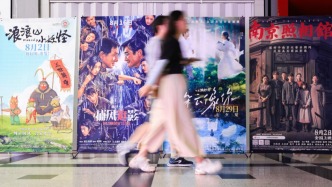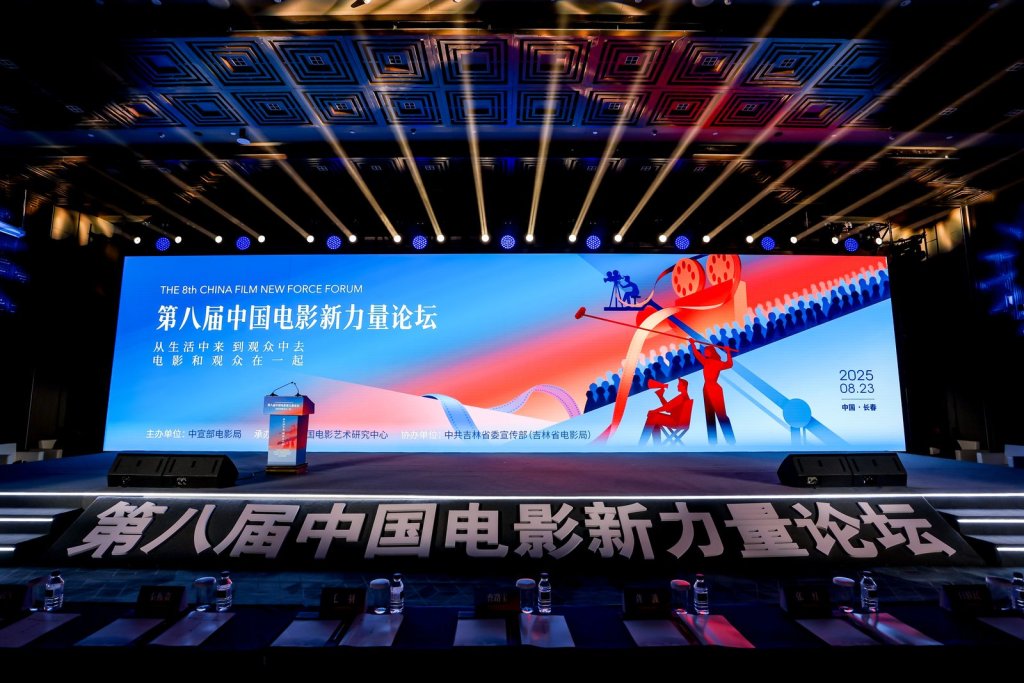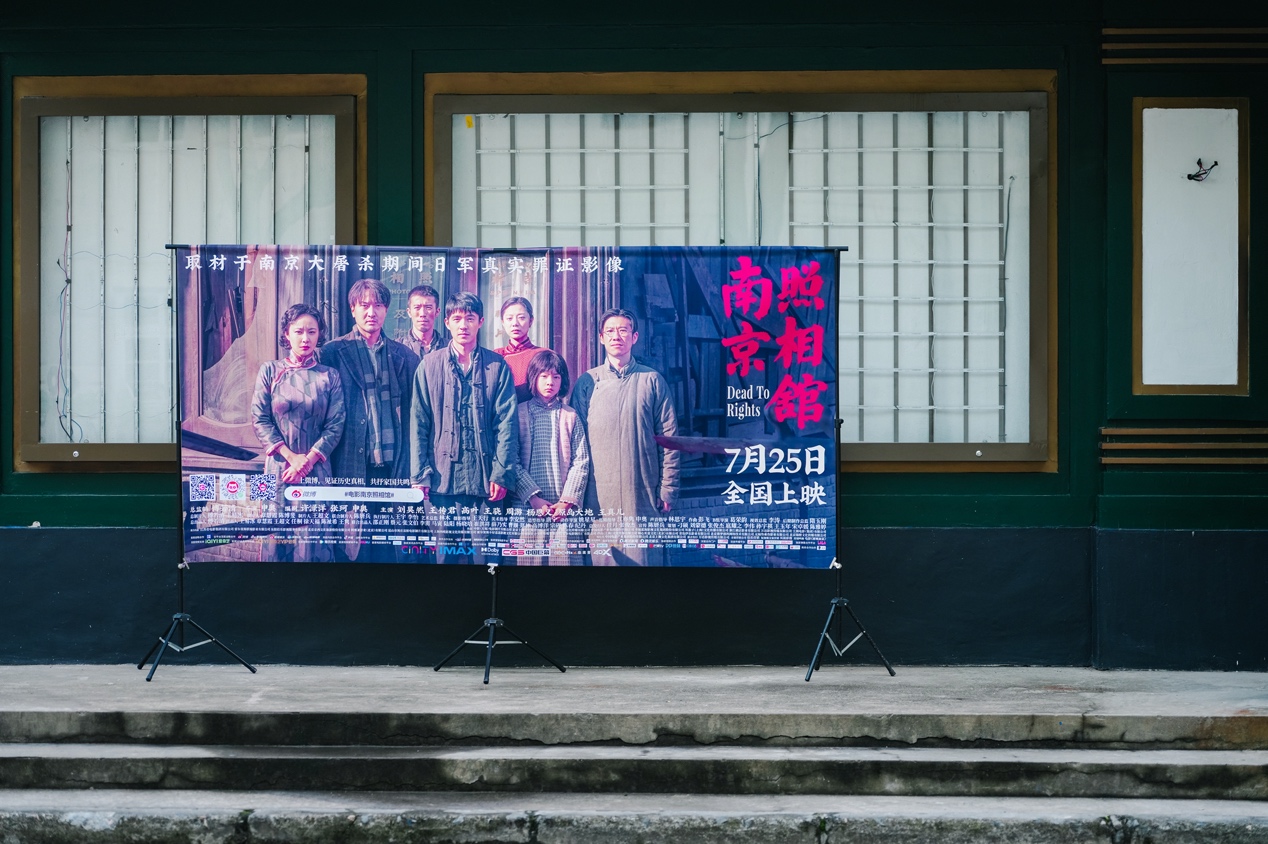
On July 25, the major historical film "Nanjing Photo Studio" produced by Shanghai Film Group was released nationwide. The film presents history from a new perspective, telling the story of ordinary people who were unarmed but used cameras and photos as "weapons" to pierce the lies of the Japanese army to cover up their atrocities.
Since its preview started, "Nanjing Photo Studio" has received the highest score for previews on both Tao Piaopiao and Maoyan platforms in 2025, and Douban gave it an extremely high score of 8.5 on the day of its premiere.
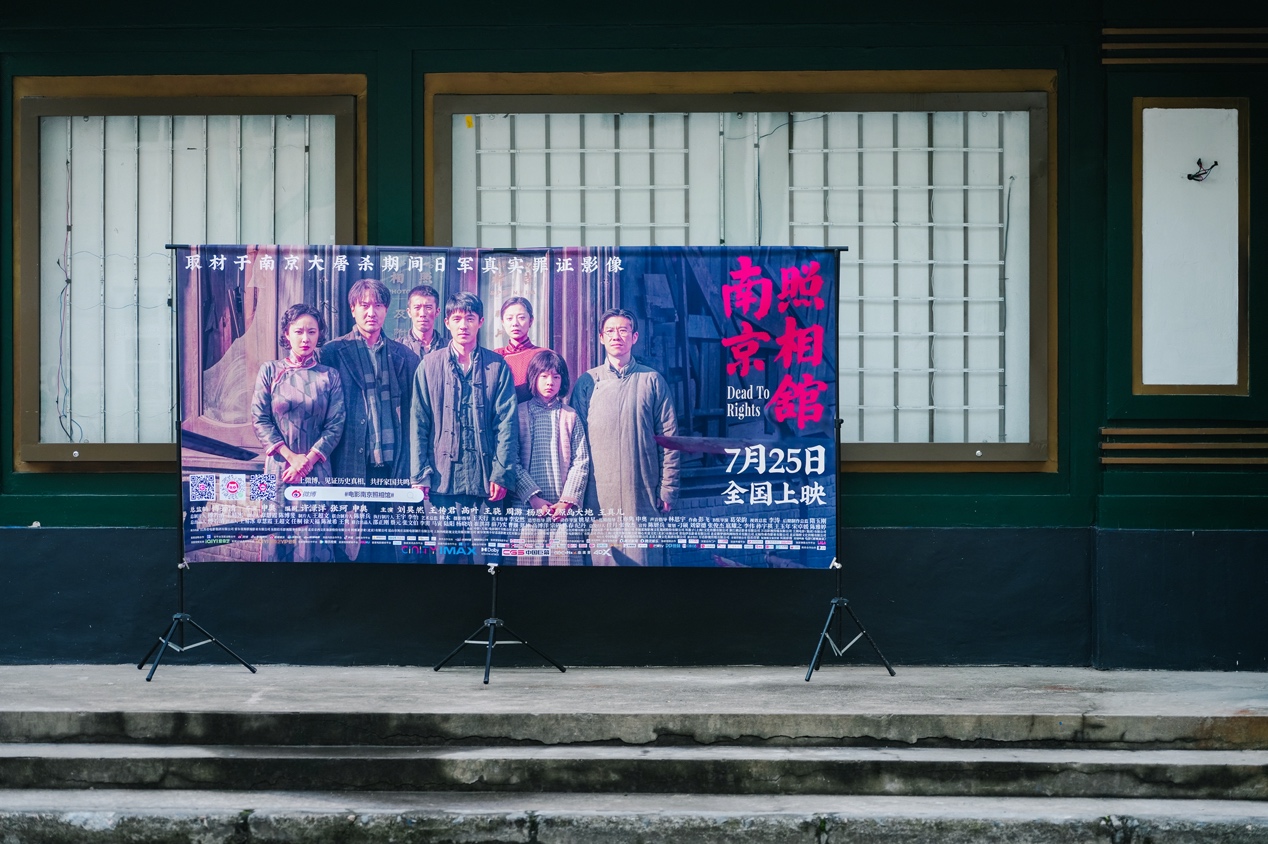
"Nanjing Photo Studio" screening at Shanghai Film and Television Park
At the Beijing premiere held the day before, the film's creators brought the enlargers, cameras, film developing equipment and other equipment that represent the "weapons" in the film to the scene and shared many stories behind the scenes of the film.
The screening held at the Chedun Filming Base of Shanghai Film and Television Park on July 25 brought the audience to the filming site of the film. When the audience walked out of the theater, they personally "traveled" to "Nanjing" in 1937. The ruins after the bombing made the shock brought by the film more concrete and profound.
Re-enacting cruel historical facts from the perspective of civilians
"Nanjing Photo Studio" does not choose to show the Nanjing Massacre from a grand war scene or military strategy perspective, but focuses on a small "Jixiang Photo Studio". After the fall of Nanjing in December 1937, it became a refuge for a group of ordinary people, and also a secret battlefield to witness and resist the atrocities of the Japanese army.
The film is inspired by real historical events. In 1938, Luo Jin, an apprentice at the Huadong Photo Studio near the Guiyi Gallery in Nanjing, was shocked by the shocking atrocities on the negatives when he was developing the film sent by Japanese military officers. He risked his life to secretly develop more than 30 photos and made an album. Later, the patriotic young man Wu Xuan took over with him to protect these precious images. This album eventually became the "No. 1 Evidence of Beijing" in the trial of the Japanese war criminal Tani Hisao. The film cleverly integrates this real story into the fictional plot, with the fate of the characters in the "Jixiang Photo Studio" as the main line, and unfolds a gripping "battle to defend the evidence".
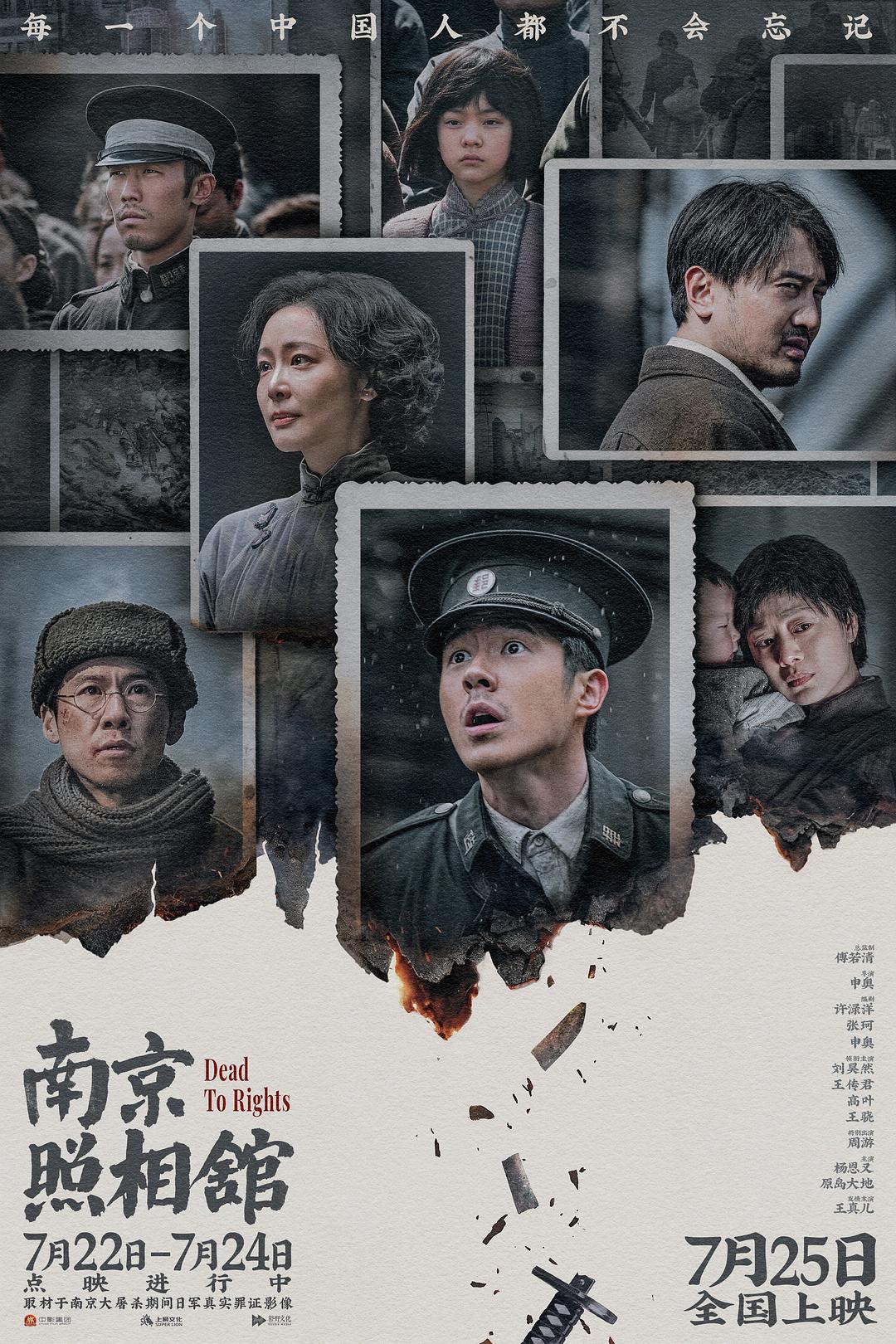
Poster of Nanjing Photo Studio
The film's narrative rhythm is compact and full of tension, from the bloody massacre after the Japanese army entered the city, to the people's hard struggle to survive in the photo studio, to the inner struggle and awakening after discovering the incriminating photos. The cruel atrocities of the Japanese army are suffocating, and the generosity and righteousness of ordinary people are even more shocking.
More than half of the plots in the film were shot at the Chedun Film and Television Base in Songjiang, Shanghai. In order to rigorously restore the historical scenes of "Nanjing Photo Studio", the film crew and Shanghai Film Production jointly formed a set design team of nearly 500 people, and spent three months meticulously carving out the 25,000 square meters of space. Entering the shooting location, a ruined city wall about 12 meters high, 6 meters wide, and stretching about 112 meters instantly pulled time and space back to Nanjing in 1937.
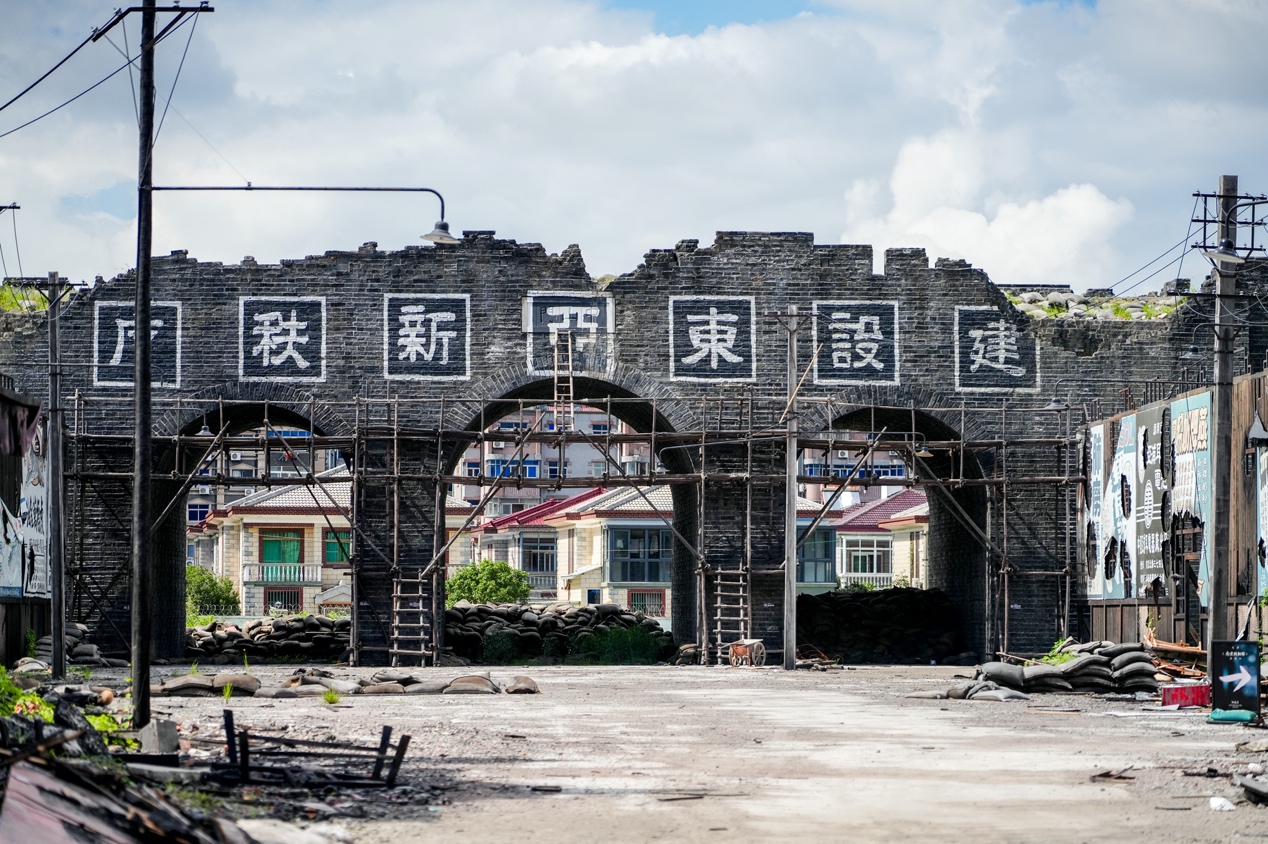
The wall in the film
Qin Feng, the film's set design supervisor and chief design consultant of Shanghai Film and Television Park, introduced: "This city wall is not an ordinary set. We made a special trip to Nanjing to make a real mold of the city wall. We used real bricks and combined them with scenery photos to reproduce the broken walls and ruins after the bombing in a 1:1 ratio. The bricks even have the names of the donors when it was built." The mottled brick surface, charred bullet holes, collapsed battlements, and traces of tank crushing of the city wall were repeatedly verified by the props and special effects team. During the filming, there were more than ten set designers on site every day for maintenance.
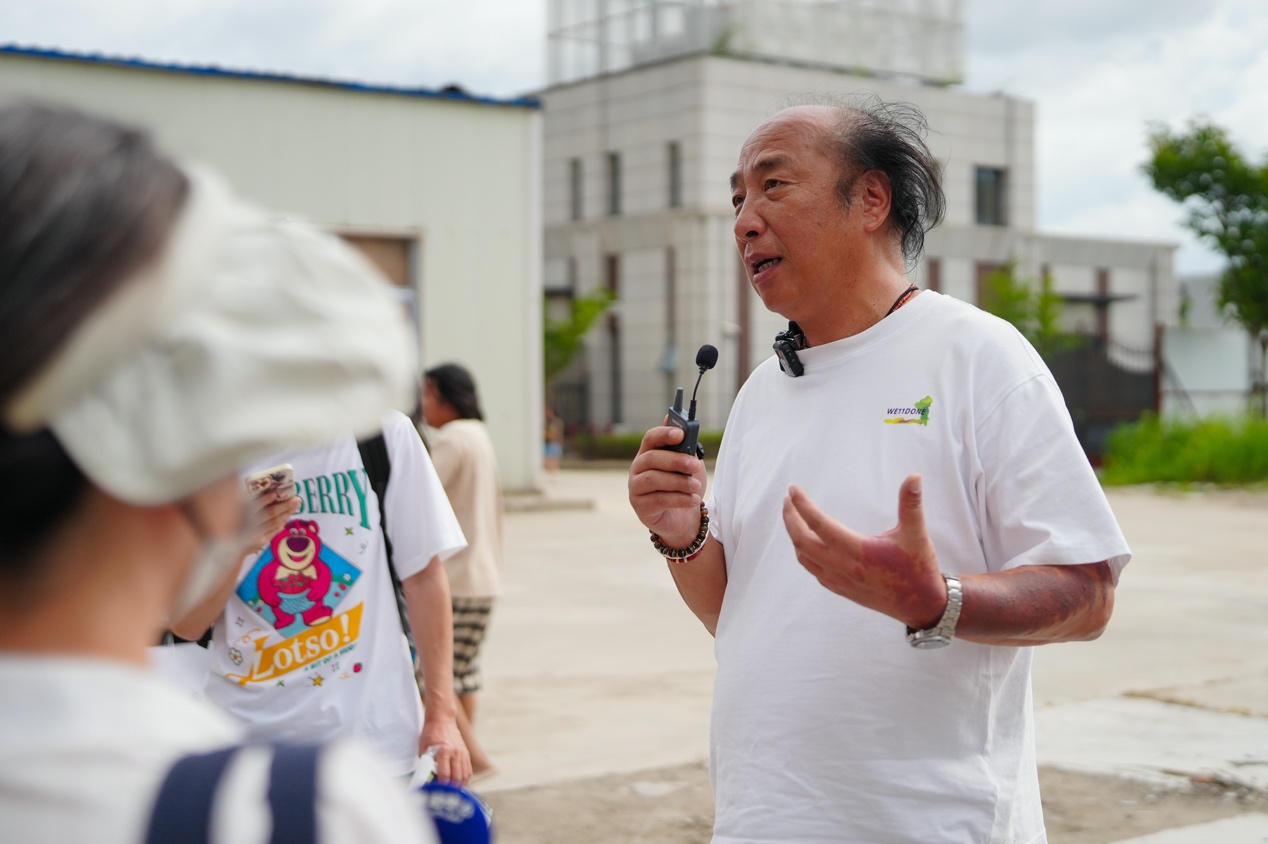
Film set design director Qin Feng
The "Auspicious Photo Studio", the core narrative space of the film, is in sharp contrast to the dilapidated street scene outside. Qin Feng mentioned, "The art department consulted a lot of information, and in order to restore the authenticity, the producer also contacted the Nanjing Cultural Relics Bureau. The glass in the photo studio is all special glass, not flat glass, just to capture the feeling of the old photo studio. The floor siding and the gold bricks on the door floor are all made according to the fine decoration standards of the Suzhou factory and laid. The wall panels are not a whole board, the requirements are very high, and the details of all aspects are very strictly controlled."
It took more than two months from the art plan to its final implementation, and every detail was discussed repeatedly by the director and the team.
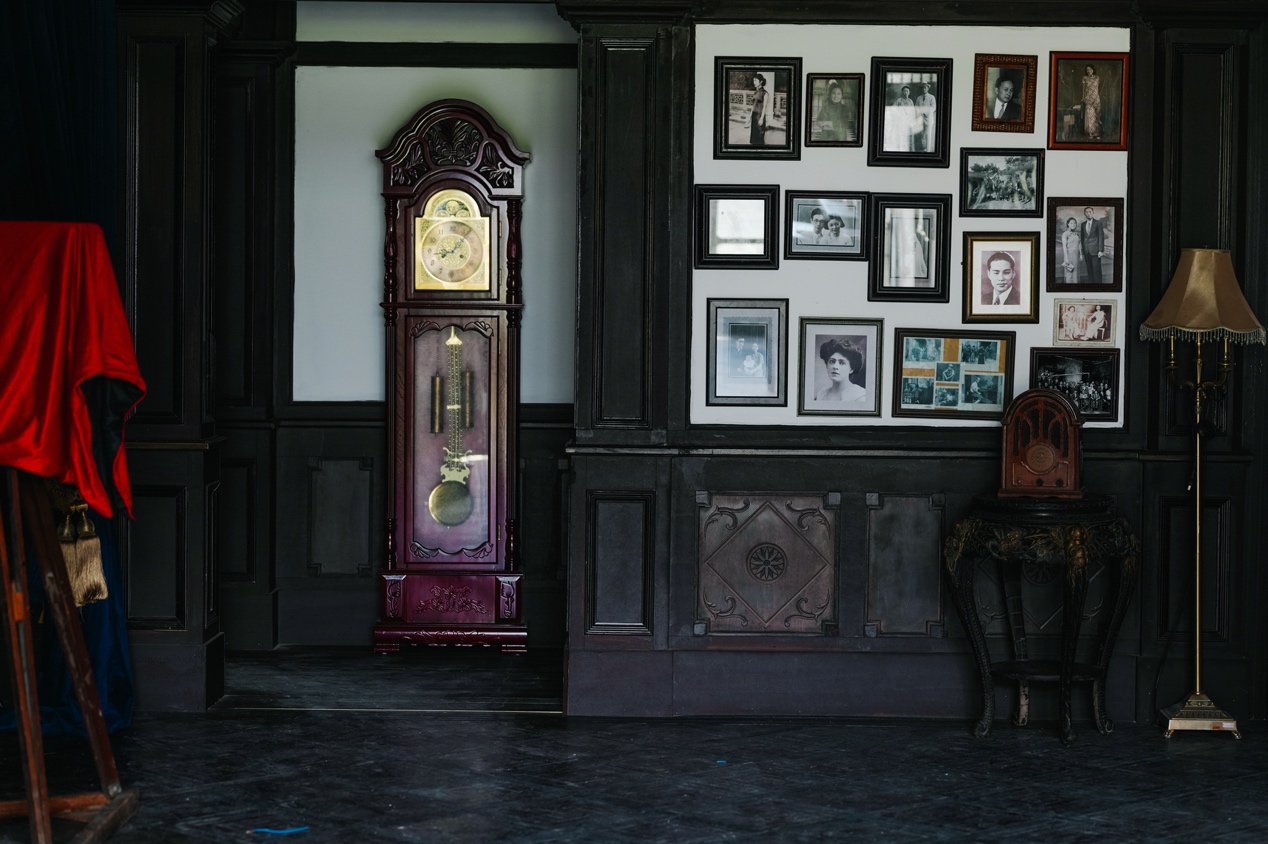
Interior view of Jixiang Photo Studio
Taking into account the visitor experience and safety factors, the park carried out professional restoration of the building after the film was completed, restoring its interior and exterior to a relatively intact state before the war. This landmark building, which carries the spiritual core of the film, will also be retained as a fixed attraction in the park for a long time.
Immersive connection from screen to reality
It is reported that the construction of the war scene this time has achieved breakthroughs in terms of scale, materials, details and other aspects. Unlike previous partial construction, this time a large-scale and systematic overall reproduction has been achieved for the first time, and its durability has been designed according to the "20 to 30 years of preservation". It can be open to the public for a relatively long time in the future, allowing more tourists to experience it up close and participate in the interaction.
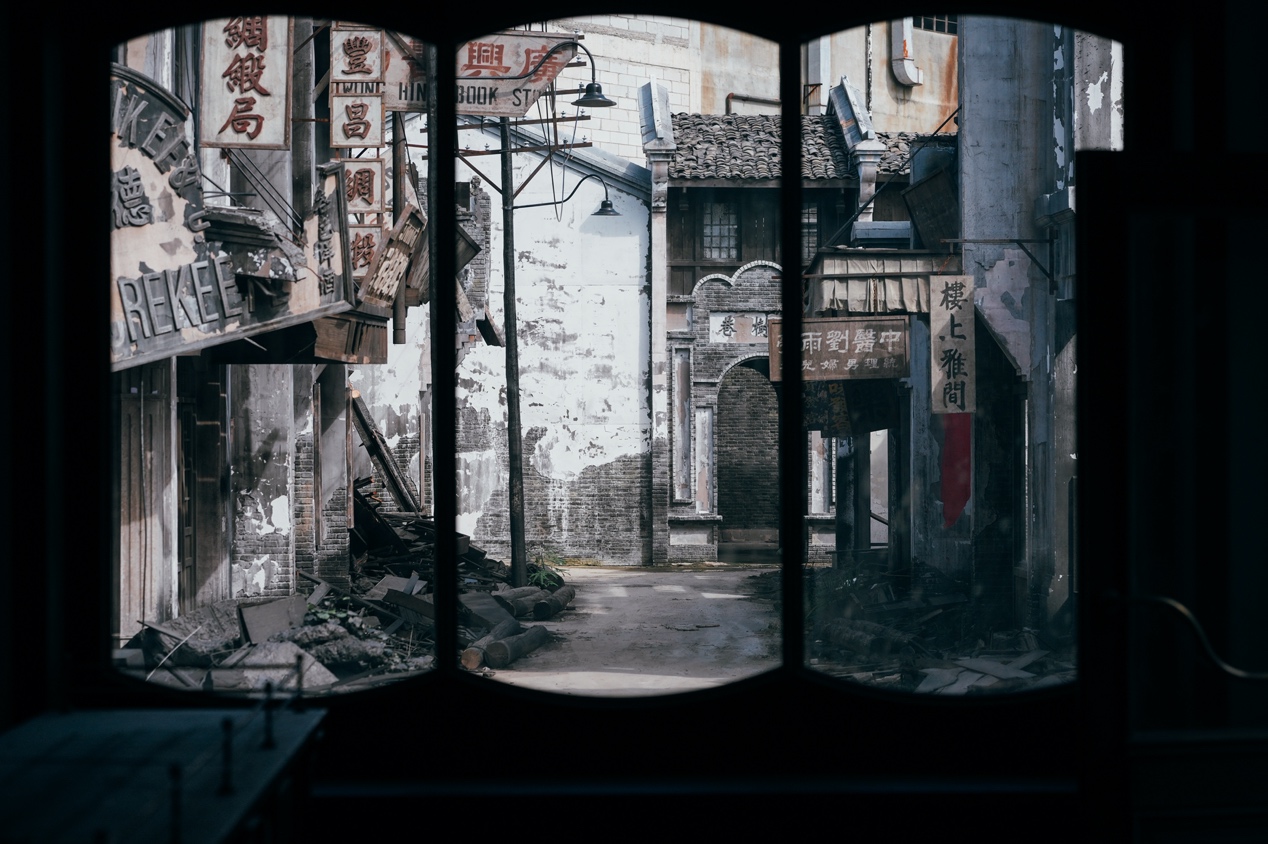
Movie set street
In the past, the audience could only see the scenes that the set design staff worked so hard to build in the cinema. But now, the immersive viewing of Shanghai Film and Television Park can transform the scenes from "camera background" to "touchable historical carrier", which is a new dimension that has not been involved in the past set design.
"The Shanghai Film Group's production team already has resource advantages and rich experience in the field of set design for 'Republic of China dramas', which can greatly shorten the shooting cycle and budget." Qin Feng said that the in-depth cooperation with "Nanjing Photo Studio" this time stems from the two parties' high recognition of the concept of "co-creation at the source" - from the early stage of shooting, the scene design has been deeply integrated into the future cultural tourism operation genes to ensure that after the movie is released, the shooting location can be seamlessly switched to an immersive film and tourism integration experience field, which not only helps the film's promotion and distribution, but also plays a long-tail effect in the dissemination of social values, making the brick and tile columns a "talking" history textbook, allowing the solidified history to continue to "tell" the audience.
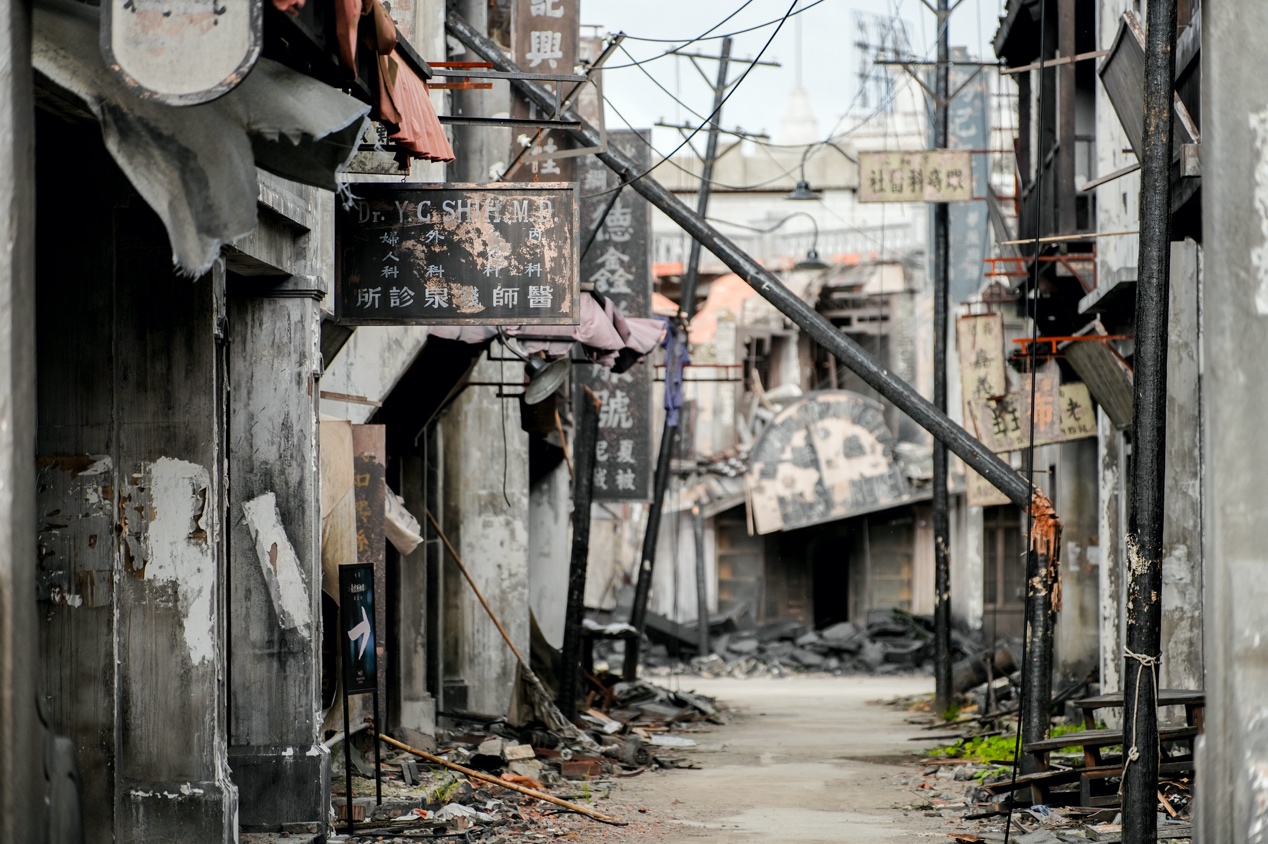
Step out of the cinema and into the movies
On July 25, the Shanghai Film and Television Park Grand Theater started a trial operation of film screenings. As the first "real-life commercial cinema chain" in the country, its uniqueness lies in the deep integration of film and television shooting locations with historical scenes. When the audience steps from the war years in the film to the real-life streets that have also experienced "war", every mottled brick wall and every charred mark silently tell of the cruelty of war.
The NPCs on site will use their super inspiring and engaging performances to lead the audience into the task of transporting the film out of the city. Don't underestimate this experience, which is full of levels and dangers, and can also make participants feel the tension and excitement.
Shanghai Film and Television Park said that from vision to real scenes, from imagination to reality, it has prompted people to more deeply understand the pain of history, making "revisiting history" a serious subject of facing trauma and not forgetting history, awakening the cherishment of peace in the intersection of time.
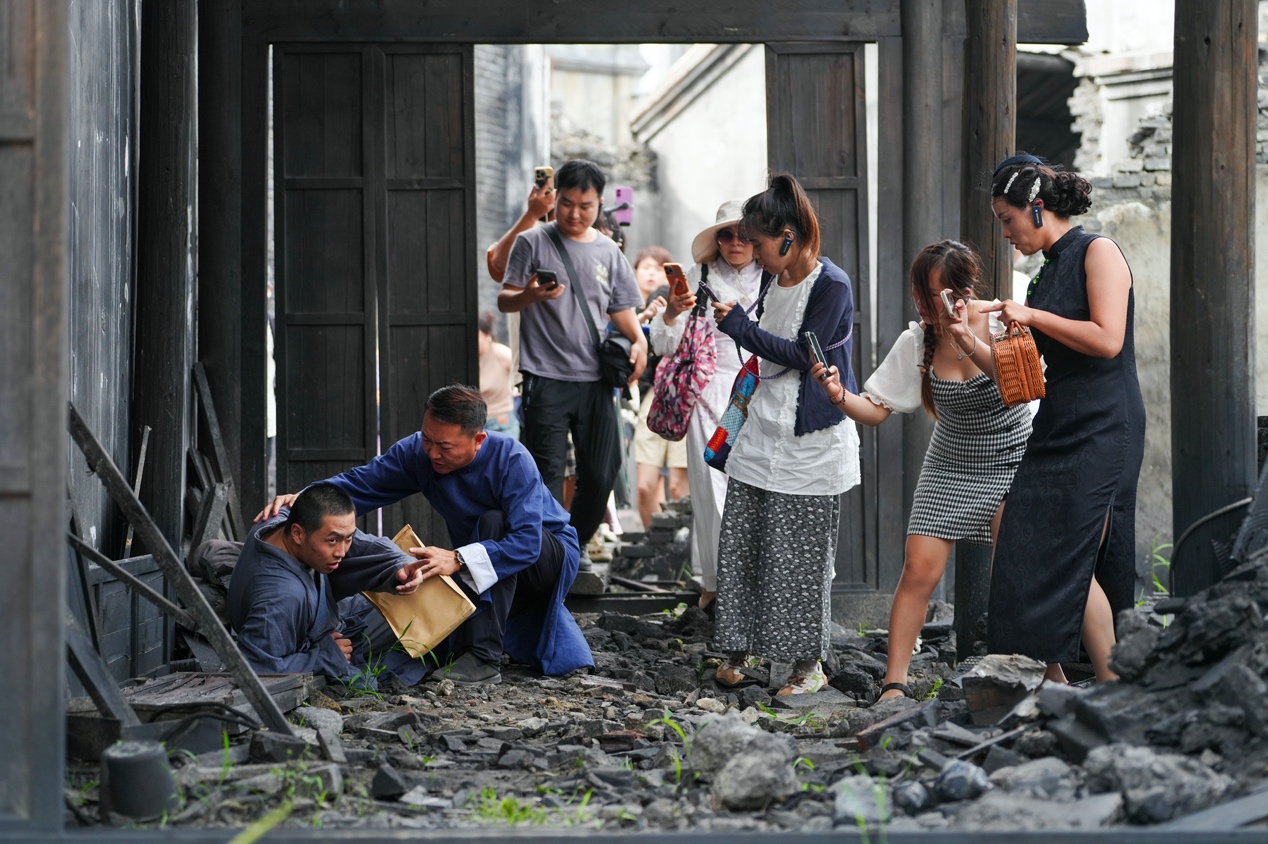
Encountering injured people while escorting film
It is reported that during the trial operation of the Grand Theater, the park will simultaneously launch a special movie-watching experience event. All viewers who watch the movie "Nanjing Photo Studio" can participate in the exclusive guided tour of the filming location for free. Under the guidance of the tour guide, the audience can explore the filming location in depth and get a close look at the ingenuity of the scene construction and the behind-the-scenes stories of the filming process.
2025 marks the 80th anniversary of the victory of the Chinese People's War of Resistance Against Japanese Aggression and the World Anti-Fascist War. In the next two months, Shanghai Film and Television Park will launch a series of commemorative activities around "Nanjing Photo Studio". In addition to the immersive patriotism real-life education classroom "Below Nanjing City", which allows participants to become members of the Anti-Japanese War Salvation Corps and complete tasks such as protecting film and revealing the truth under the guidance of professional NPCs, the upgraded "Original Heart Red Bus" has added exclusive explanations and interactions at the filming location; the large-scale original immersive drama "New World" will also launch a "two days and one night" special edition.
Lu Xuling, Party Secretary and General Manager of Shanghai Film and Television Park, said: "We take 'source co-creation' as our core concept. We not only provide filming space, but also strive to convey deep social values through scenes. Visitors will feel awe for the historical truth when touching the city wall, feel the brilliance of humanity in suffering when walking through the streets, and cherish peace in immersive empathy."

